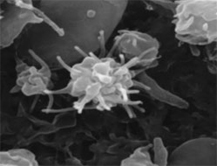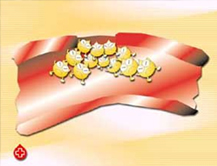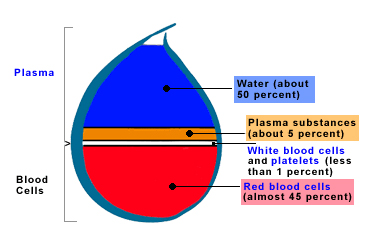Blood is a type of connective tissue that is composed of plasma, water and
cellular components. Cellular components include white blood cells, red
blood cells and platelets.
Red Blood Cell
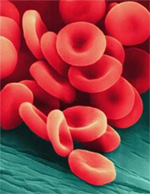 |
|
The red blood cells create the bright red color. These cells are
responsible for the transportation of oxygen and carbon dioxide throughout
the body. Their oxygen-carrying function is made possible by their
main component, Hemoglobin (Hb) that occupies about one-third of the
total cell volume. It is the pigmented protein with four globins,
two alpha (α) chains and two beta (Β) chains, which gives
the blood cell its red color. It mainly functions to bind oxygen on
its iron atoms that are each present within its four heme groups bound
to globins. It allows the RBCs to carry out |
their primary functions of transporting oxygen from the lungs to the tissues
of the body and removing carbon dioxide from the tissues to the lungs.
White Blood Cell
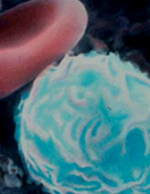 |
|
White blood cells or leukocytes (shown in figure with a red blood
cell) are the cells that defend the body from infections. They seek
out invading organisms or materials and minimize their effect in the
body. They have a short life cycle, lasting from few days to few weeks.
Several different types of white blood cells exist in blood, such
as neutrophil, eosinophil, basophile, monocyte, lymphocyte, and macrophage
that work in the immune system to protect the body from foreign materials. |
Platelet
Platelets or thrombocytes are tiny cell fragments that help the blood to
clot. When a blood vessel is damaged, platelets gather and stick to the
damaged area and form a clump. They bind tightly and release chemicals that
make the blood vessels narrow to reduce blood loss.
Plasma
Plasma is the extracellular material made up of water, salts, and various
proteins that, along with platelets, encourages blood to clot. Proteins
in the plasma react with air and harden to prevent further bleeding.
|


